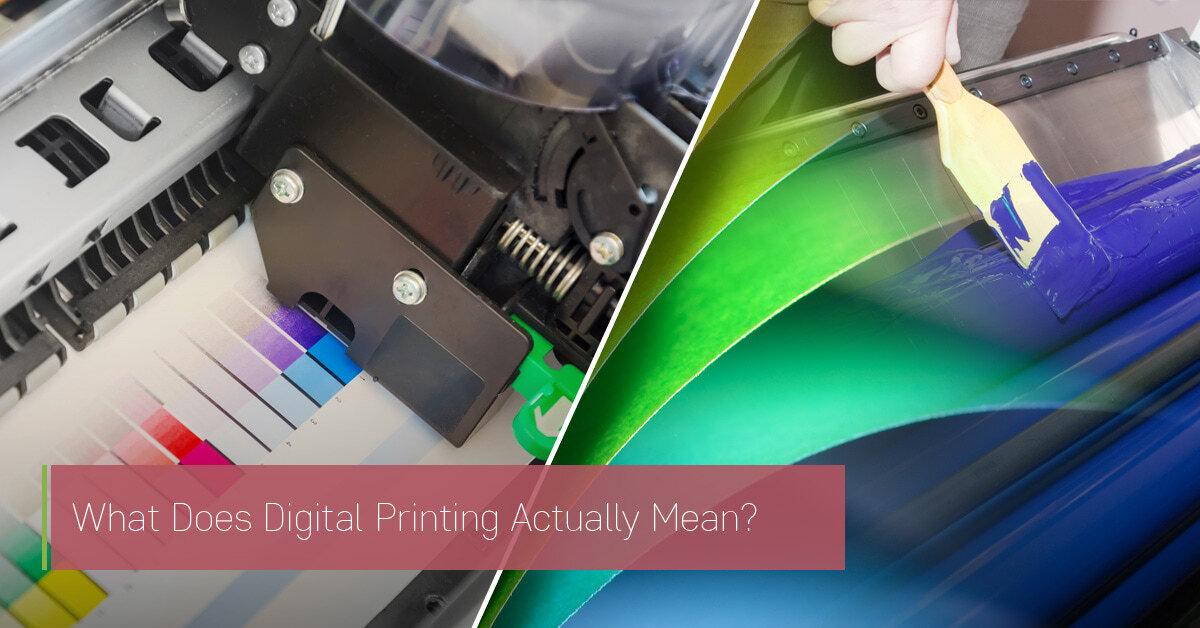Before the age of digital printers, most businesses relied on low quality black and white printers to produce documents, media, and other files. To read the data necessary to print out documents, these printers required a direct connection to a computer with the stored files or a scanner. The process was not only inconvenient but took businesses months to process and complete simple orders.
Since then, print technology experts have developed features within printers to help automate and improve the process to meet the needs of an increasingly connected digital era. With 9 of 10 businesses requiring marketing material to grow, the industry continues to test new parts and improve ink transfer quality. The current solution is digital printing.
In retrospect, digital printing means that workers can wirelessly upload files from a computer or digital storage device to print out high-quality designs. The process eliminates paper waste, improves quality, and cuts down on the manual labor required to create a finished product. In this article, we’ll provide insight on how it improves the quality of prints and compare the difference between digital printing vs. offset printing.
What Is Digital Printing?
Although it sounds complicated in comparison to previous printing methods, digital printing simplifies the process of creating a printed document. To transfer a design, the printer reads data from an external or internal storage device. The printer then uses a toner (like in laser printers) to directly transfer ink onto sheets of paper, fabric, and other synthetic materials.
The result of the design is a clean, crisp, and shiny image. However, digital printers are not designed to process large runs of 500 or more prints like other types of printers. Digital printers produce high-quality images and are flexible enough to change specific codes, words, names, or addresses in the middle of each order.
The Advantages of Digital Printing
Digital printers use high-volume lasers or inkjets on large-format media to print out vibrant images. Many businesses would previously use lithography, flexography, letterpress, gravure, or other mechanical methods to create marketing material. However, the digital creation of images is shown to improve prints down to the microscopic details and uses less ink in the process.
Here are some of the advantages of digital printing:
- Print any size or format on any material
- Reduce the setup costs for short runs
- Cost-effective white and black prints
- Create detailed images or designs on small runs
- Modify the impression of each image
Due to the money saved on printing material and labor, digital printers have the potential to surpass the ability of offset printing techniques. Once technology advances in efficiency, businesses could produce thousands of prints per run and reduce the cost of materials.
Digital Printing vs. Offset Printing
There are two conventional methods used to transfer artwork on to sheets of paper or mixed media – digital and offset. Offset or screen printers use a stencil roller to apply ink in layers on the surface of materials. The printer applies each color with a separate stencil until the final shade and look is achieved. It is currently deemed the best method to produce large quantities without wasting material.
Digital printers, on the other hand, process designs with computer technology and directly apply the ink to surfaces without heat or other chemicals. Most designers and businesses choose digital printers for designs that require vibrancy or intricate details in low quantities.
How Digital Printing Is Revolutionizing the Industry
Due to the speed and quality advancements within the digital printing industry, the inconveniences of traditional printing techniques are becoming obsolete. More designers and businesses today use the versatile modification platform to create custom graphics for marketing purposes.
Graphic designers prefer high-end proofing for better color transparency on marketing materials, while businesses utilize thermal wax to produce colorful presentations for their projectors. An improvement in the quality, speed, and efficiency of digital printers may open new avenues for businesses to advertise or for artists to create magnificent graphics.
Experience Digital Printing with Cartridge World
Can a business benefit from the advantages of digital printing? Now is an excellent time to test them out and try new marketing ideas. Outdated offset printer technology doesn’t offer the same level of detail that digital printers produce, and they are not as capable of achieving the same level of quality.
Even though digital printers can’t match the productivity of offset printers on large scale projects, over time, the industry may develop better technology that can create hundreds of highly detailed prints per run.
Cartridge World understands that not all businesses can afford to test out the latest printer technology on the market. Hire a service that provides a new printer for free and save money on the supplies to use it. Contact Cartridge World today to get started using some of the most advanced printers available, without paying for it brand new.
